 4 Columns
4 Columns
4Columns returns with a new issue on September 3. This week, we go searching for flowers in an ethnobotanical review of our archives, and are surprised to find an entire meadow of blooms.
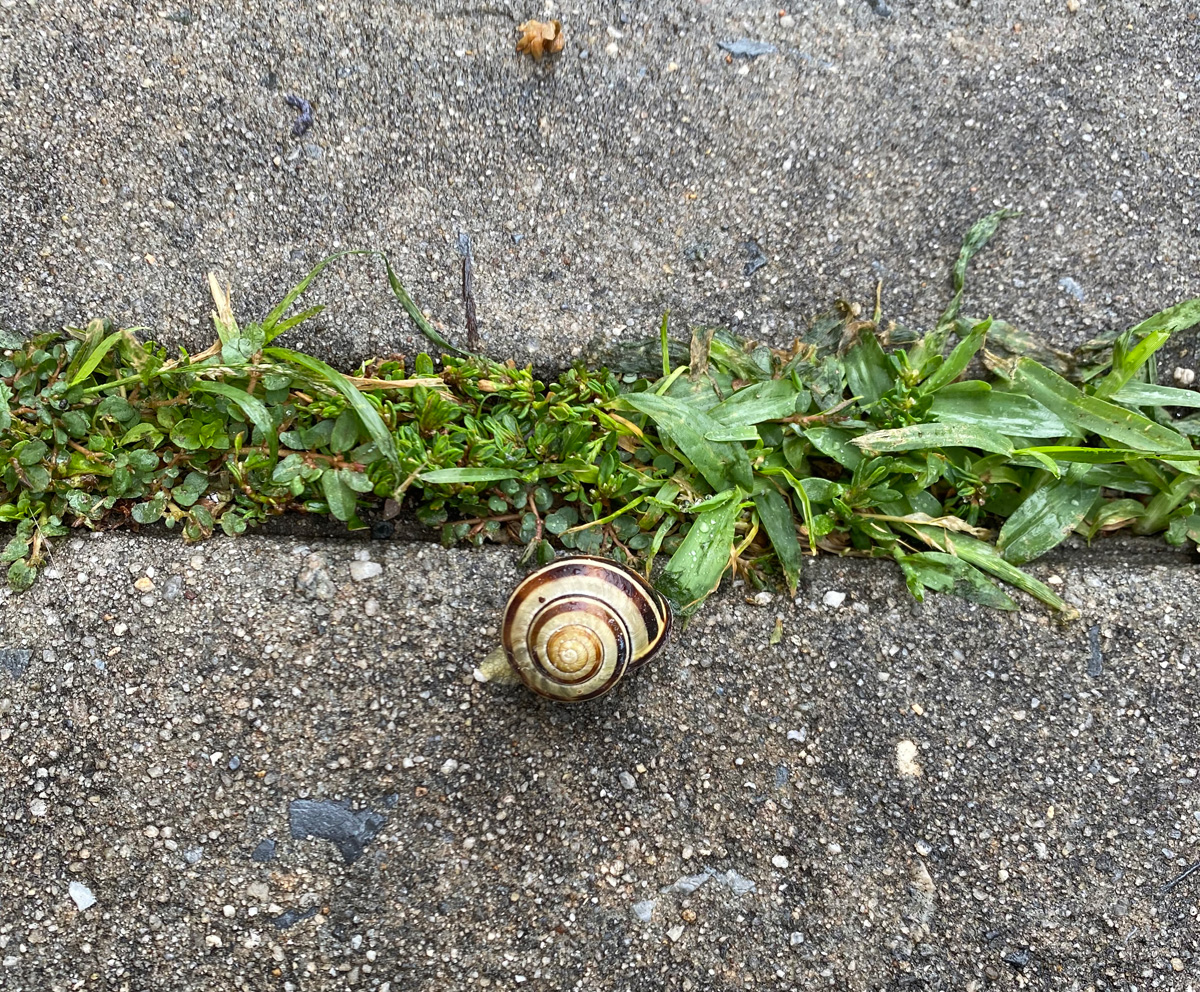
The managing editor was thrilled by this rare sighting of a tiny snail near her home in Queens. The snail was slowly strolling along a strip of miniscule jungle growing in the middle of the sidewalk. The plants always persist!
The story of a culture’s relationship with plants is the story of that culture itself. If we undertook an ethnobotanical review of the pages of 4Columns, what flowers might we find winking in the margins, or what weeds creeping in through the em dashes—and what might we learn from them?
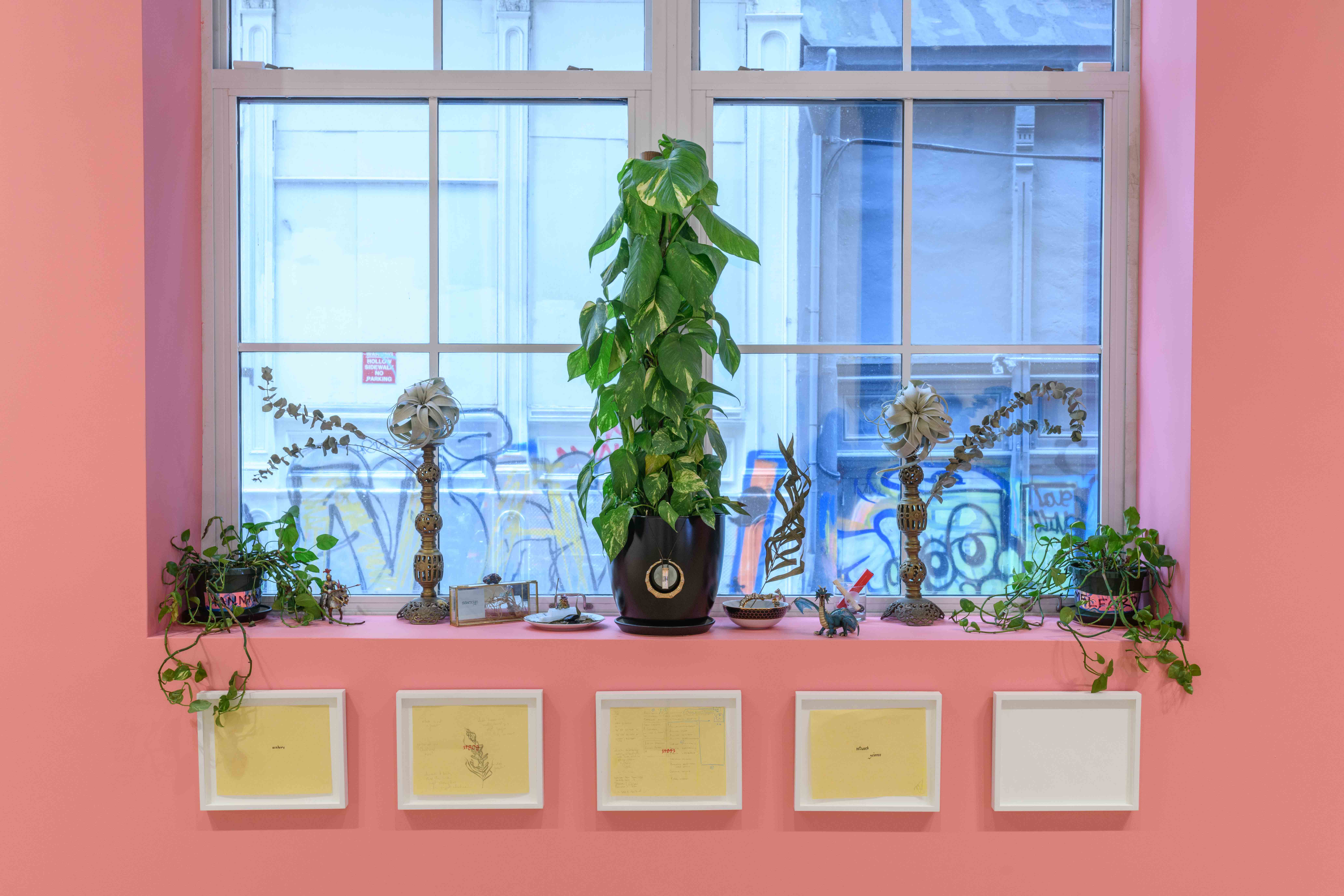
Adjua Gargi Nzinga Greaves, For Aricka, Ayana, Ayodele, Bernice, Chantelle, Charmaine, Cynthia Ch., Cynthia Co., Daphne, Davina, Dawn, Dina, Emily, Erica, Evadne, Frances, Gail, Gwen, Hara, Heather, Imanei, Imani, Janet, Jenny, Kadija, Kahdeidra, kale, Kelly, Kenya (R), LesLes, Lois, Lynnette, Madeleine, Mahogany, Marsha, Maiya, Najela, Nontsi, Ola, Pilar, Queen, RaFia, Ro-Ro, Sandra, Sasha, Serenity, Shana, Simone L, Simone W, Tabitha, Taiyi, Trinity, Uchenna, Vivian, Wangechi, X, Yvette, Zuri, 2021 (installation view). Living plants: Hannibal (Epipremnum aureum) with rose quartz, Gertrude Deuxieme (Tillandsia xerographica), Leonie (Philodendron totem), Eversley Deuxieme (Tillandsia xerographica), Melford (Epipremnum aureum) with amethyst; dessicated floral matter (eucalyptus, grass, willow, palm), knight on horseback figurine, brass candlesticks, polystyrene, porcelain and 18 karat gold plates, crystals (various), bamboo earrings, jade, cremains, leather, cork, glass, dragon figurine, sandalwood incense and ceramic holder, palo santo (Bursera graveolens), and window; overall dimensions variable. Courtesy Artists Space. Photo: Filip Wolak.
4Columns has published a number of essays explicitly about plants. There’s Ania Soliman’s review of philosopher Emanuele Coccia’s The Life of Plants, which “posits the flower as the most exemplary form of reason,” for instance. There’s also managing editor Ania Szremski’s reviews of plant neurobiologist Stefano Mancuso’s The Nation of Plants, a vegetal constitution of universal rights for all living beings, and of poet and artist Adjua Gargi Nzinga Greaves’s achingly brilliant exhibition of “ethnobotanical literary criticism.” Exploring a more malevolent work, film editor Melissa Anderson writes about the bioengineered flowers in Jessica Hausner’s genre-fluid film Little Joe that colonize human emotion, to potentially disastrous ends.
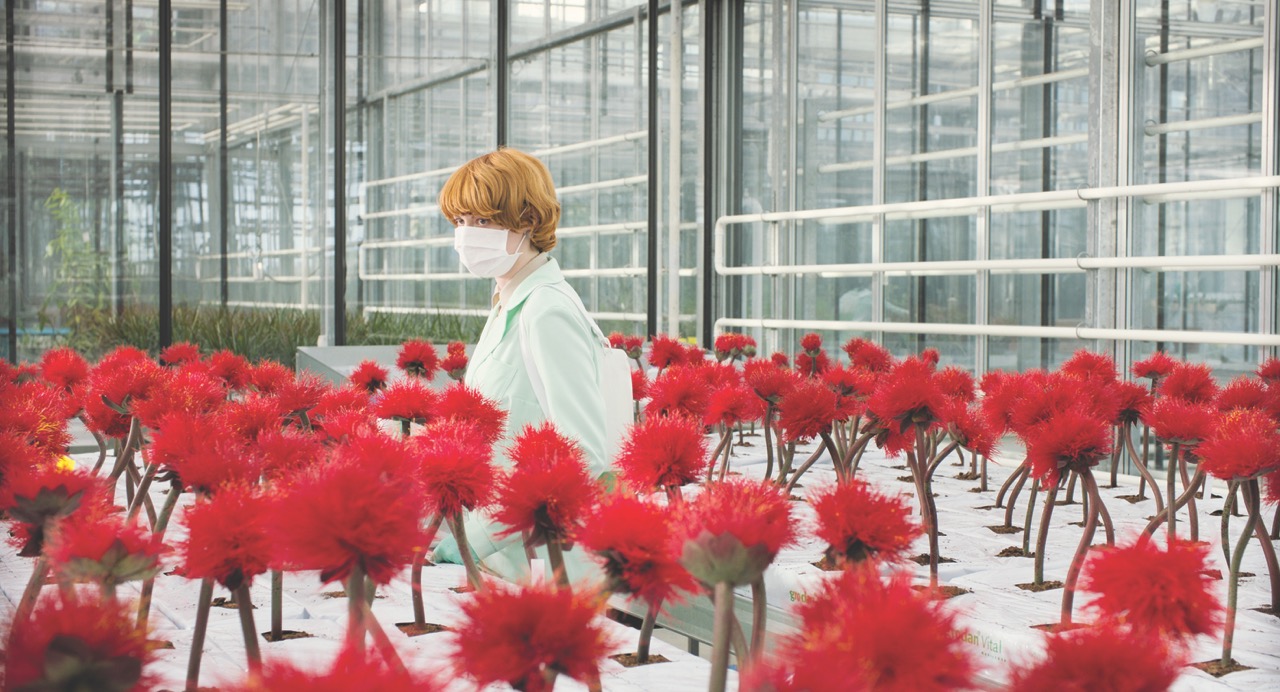
Emily Beecham as Alice in Little Joe. © coop99, the Bureau, Essential Films. Image courtesy Magnolia Pictures.
But there is also an unexpected flush of vegetation slyly leafing its way through essays that are meant to be about other things entirely. As Rahel Aima observes, the poignant fragrance of the mogra flower perfumes a fictional character’s hair in a Chitra Ganesh exhibition. The bitter herb minari travels across the ocean in a film by Lee Isaac Chung, also reviewed by Anderson. Bursting summertime bouquets lusciously pose for painter Amy Sillman, described in a piece by Johanna Fateman. Delicate flowers still their sway so Jennifer Packer may paint them with grief and care, and Emily LaBarge may write about them in kind.
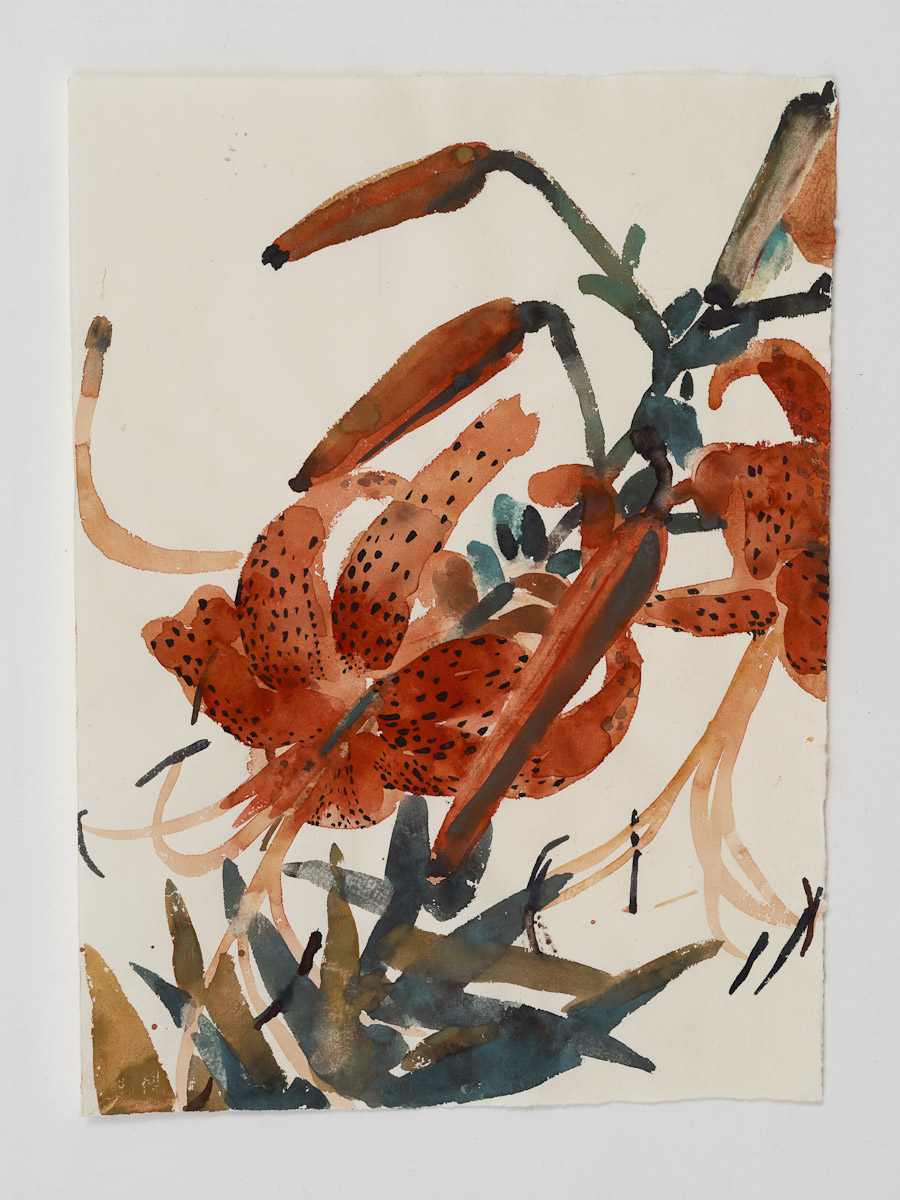
Amy Sillman, Untitled, 2020. Acrylic on paper, 15 1/4 × 11 1/4 inches. Image courtesy the artist and Gladstone Gallery. © Amy Sillman.
What’s more: Tobi Haslett notes how red carnations tremble at Rosa Luxemburg’s grave in Godard’s The Image Book. Alma Thomas’s garden is abstracted into blazing colors at the Studio Museum in Harlem, and Aruna D’Souza considers what it means for the artist to care about her flowers in the midst of the civil rights movement. Recently deceased jazz legend Milford Graves shows his tremendous “global garden” to the viewing audience in the documentary Full Mantis, reviewed by Geeta Dayal. “Plants are constantly picking up cosmic energy,” he says in the film. “They’re just like humans, man.”
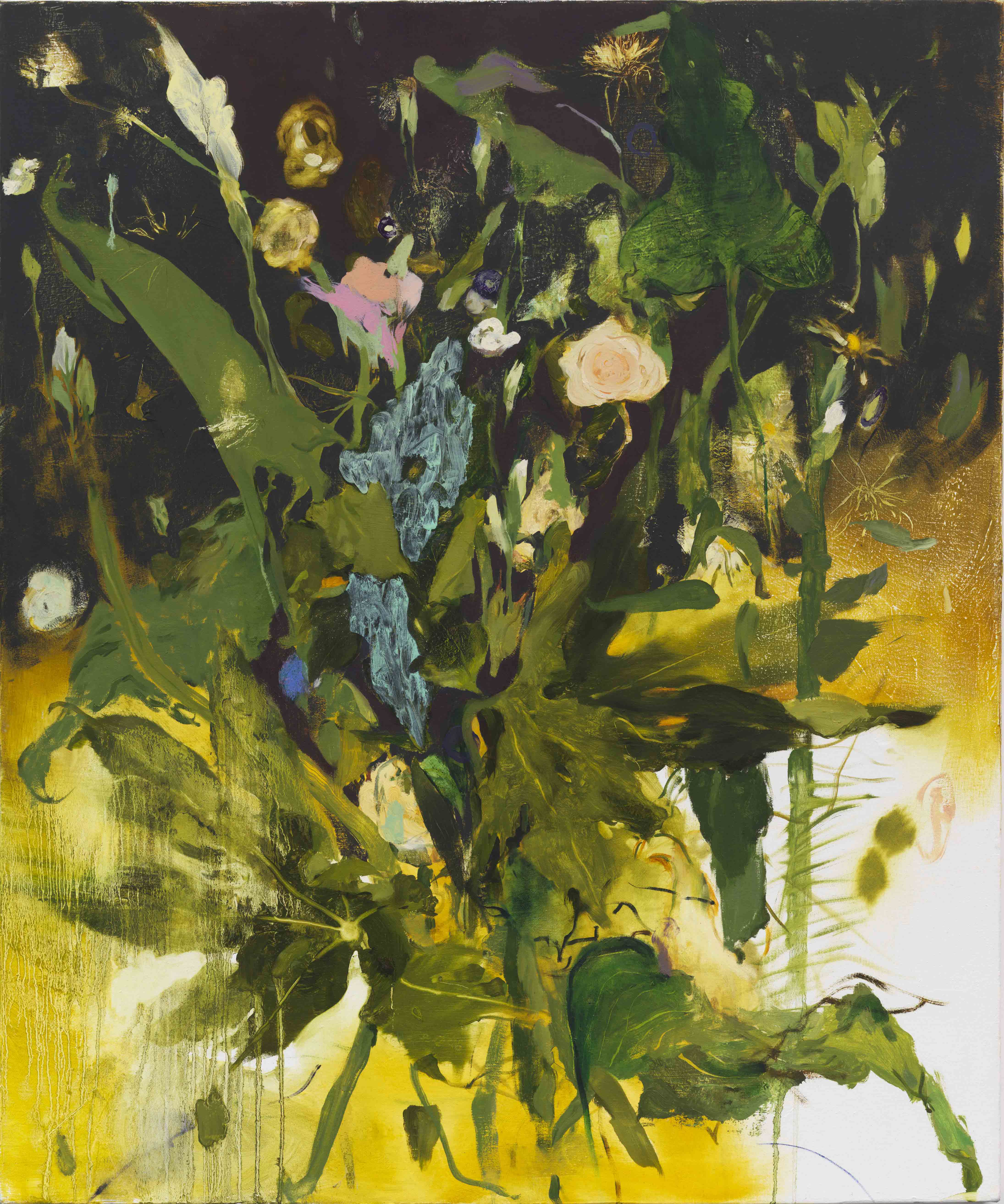
Jennifer Packer, Say Her Name, 2017. Oil on canvas, 40 × 48 inches. Courtesy the Artist, Corvi-Mora, and Sikkema Jenkins & Co. Photo: Matt Grubb.
What a dense tangle of foliage in an online magazine of arts criticism!
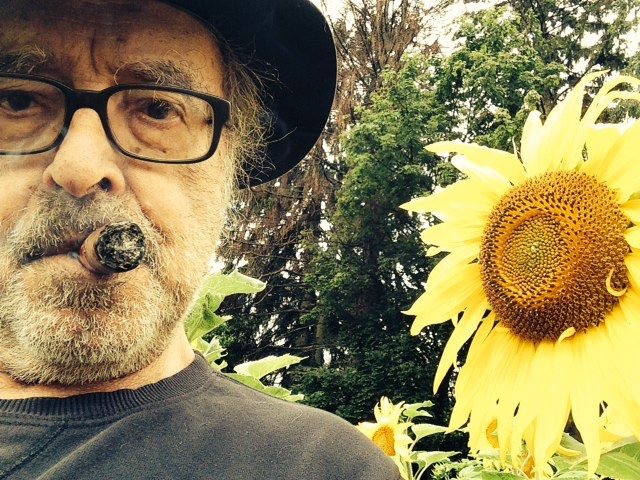
Jean-Luc Godard. Image courtesy Kino Lorber.
Ethnobotany has traditionally been most interested in the usefulness of plants to humans, and the ways in which humans take advantage of them. But what if the plants found in our archives were the ones that manipulated our critics into mentioning them, thus propagating themselves into our very imaginations, like dazzling divas of the vegetable kingdom? Could we be unaware servants in a culture of flowers?
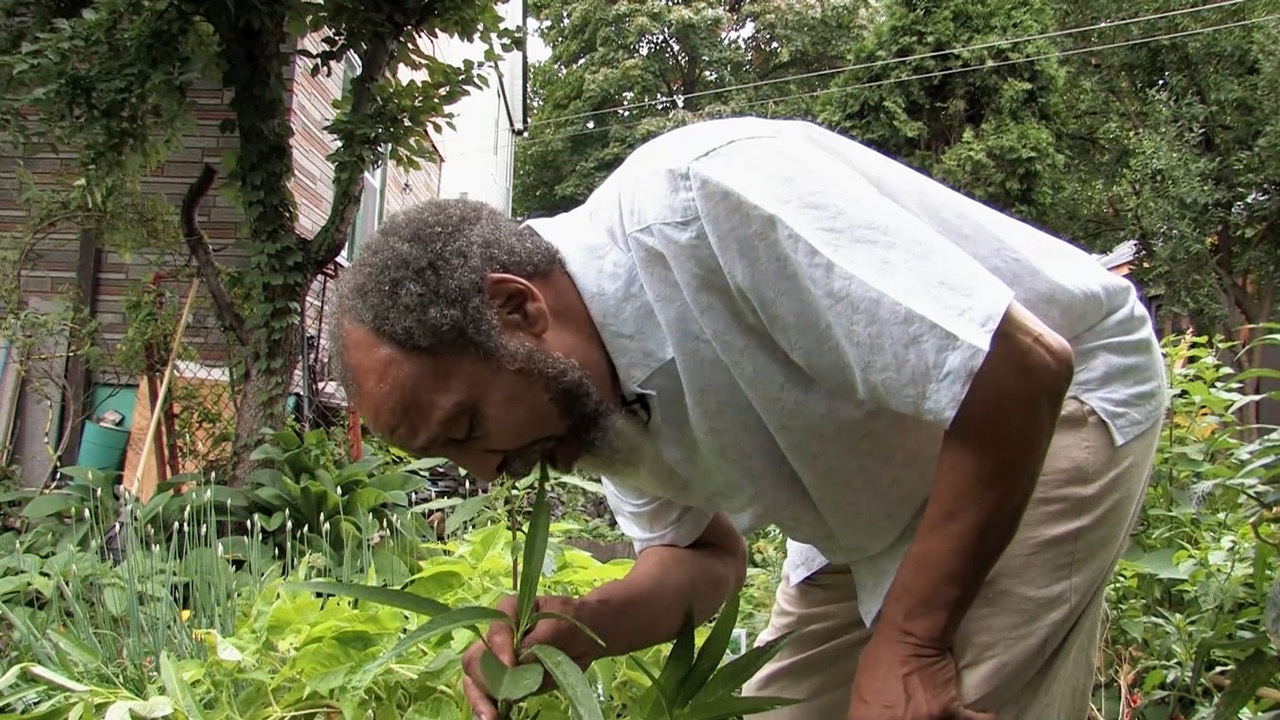
Milford Graves in Full Mantis.
“A plant’s gonna do what a plant’s gonna do. It’s up to you to listen to it,” Graves said in an interview shortly before his passing. “Plants! The plants! The plants!”